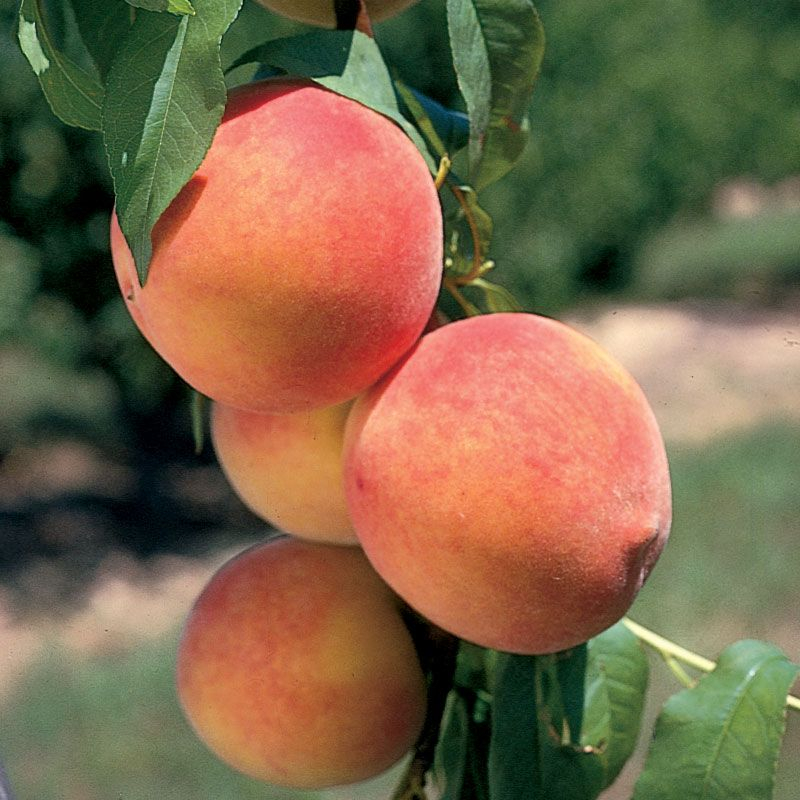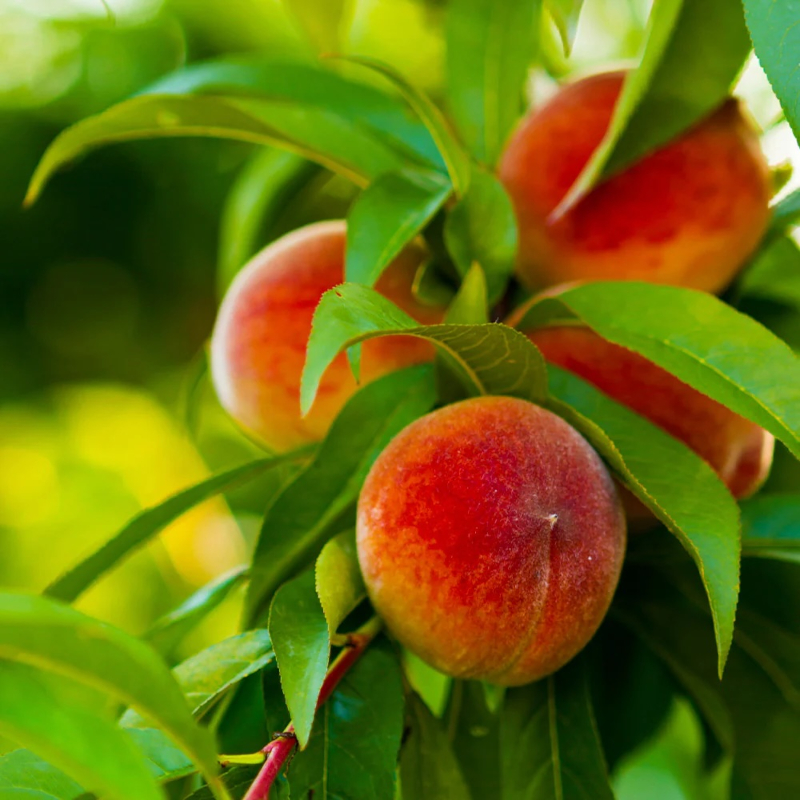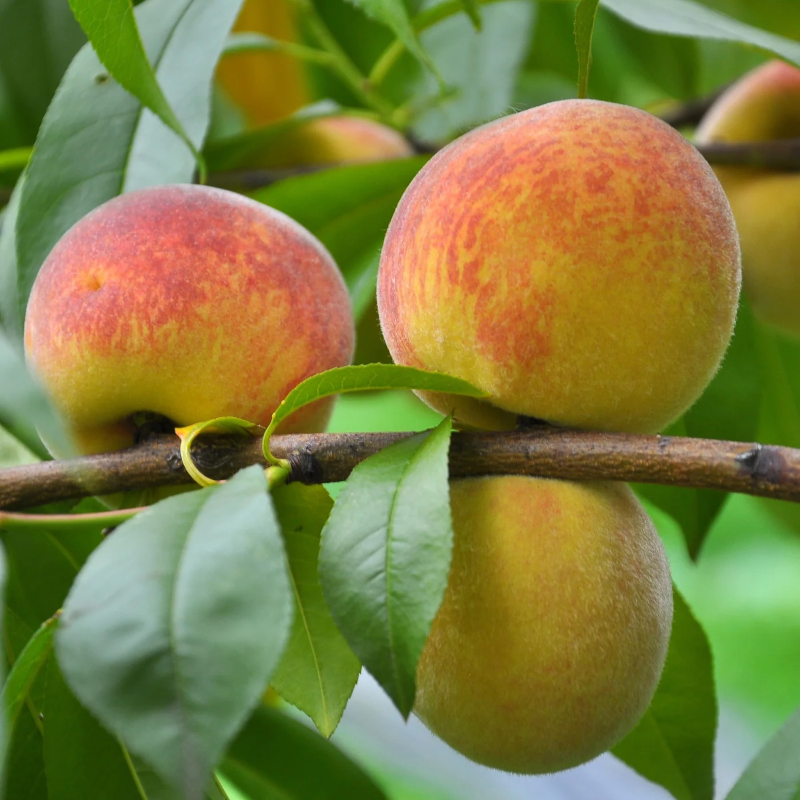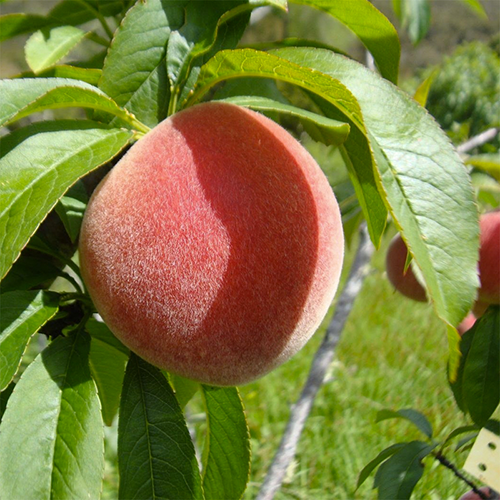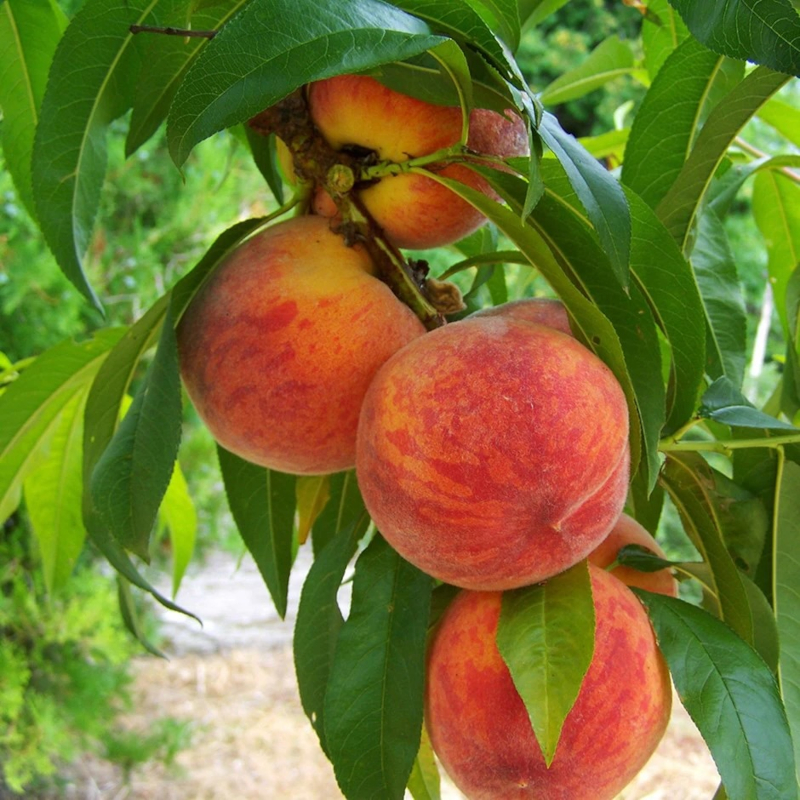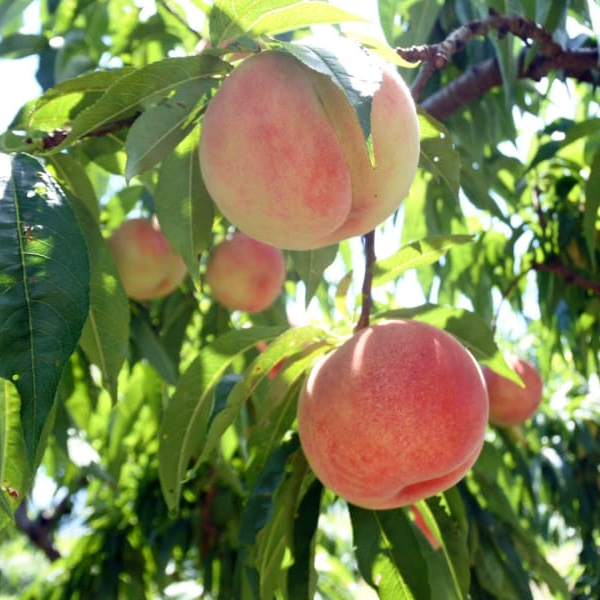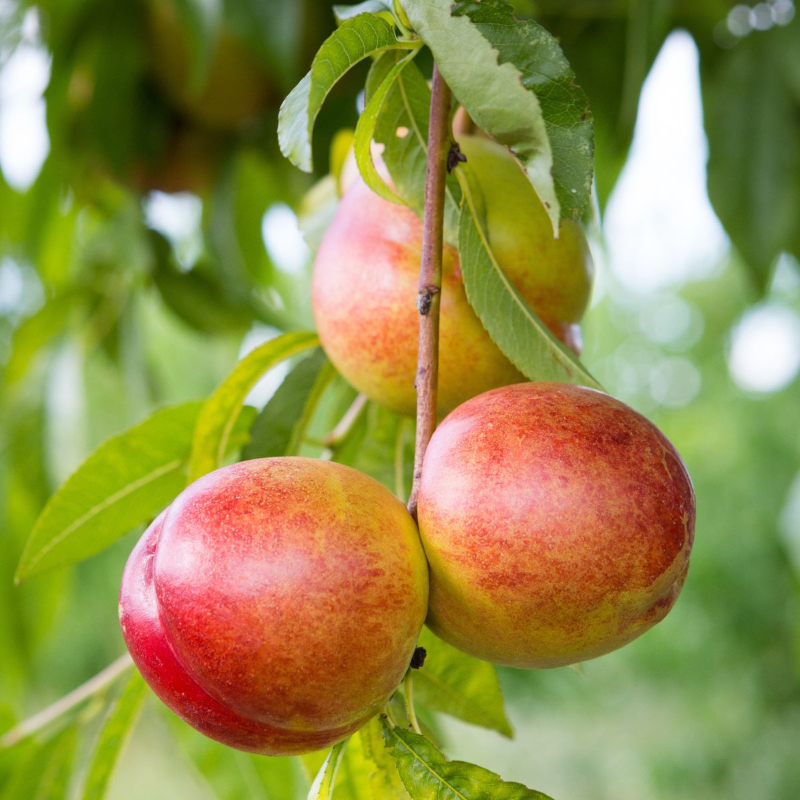Peach
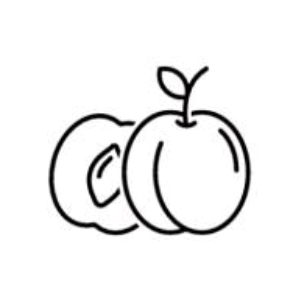
How To
Grow
Peach Tree
Choose the right variety
Select a variety that suits your climate (chill hours) and elevation.
For Nepal, low to mid-elevation areas can grow early ripening or subtropical peach varieties like Flordaprince or Tropi-Berta.
Select a good location
Full sun (at least 6–8 hours/day).
Well-draining sandy or loamy soil.
pH between 6.0–6.5.
Avoid frost pockets or areas with poor air circulation.
Planting
Best planted in late winter or early spring (before bud break).
Dig a hole twice as wide as the root ball and just as deep.
Space trees about 15–20 feet apart (semi-dwarf: 10–12 feet).
Gently spread roots and cover with soil, firming it down.
Water deeply after planting.
Watering
Regular watering is essential, especially during the first two years.
Keep soil moist but not soggy.
Reduce watering in winter.
Fertilizing
Start fertilizing in the second year.
Use balanced fertilizer (e.g., 10-10-10 NPK).
Apply in early spring and again in summer if needed.
Pruning
Prune in late winter to encourage an open-center (vase shape).
Remove inward-facing, crossing, and vertical branches.
Maintain 3–5 main scaffold limbs.
Pollination
Peach trees are mostly self-pollinating, meaning a single tree can produce fruit without needing another tree nearby. Bees and other insects help transfer pollen between flowers, improving fruit set. Good sunlight, warm weather during bloom, and healthy pollinator activity all support successful pollination.
Pest & disease management
Watch for peach leaf curl, aphids, borers, and fungal diseases.
Use copper fungicide in dormancy and insecticidal soap when needed.
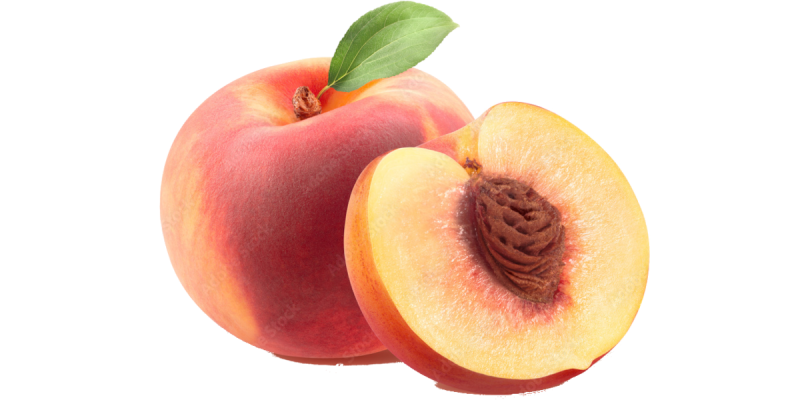
Harvesting
Harvest peaches when fully colored, slightly soft to the touch, and aromatic.
In Nepal, harvest can range from May to July depending on the variety.
Health Benefits of Peach
- Peaches contain vitamin C, polyphenols, and carotenoids that protect cells from oxidative damage.
- Vitamin C boosts collagen production and helps reduce signs of aging and sun damage.
- Beta-carotene (provitamin A) supports skin tone and repair.
- Peach fiber helps prevent constipation and supports a healthy gut microbiome.
- Vitamin C and vitamin A improve immune defense against infections.
- Potassium in peaches helps regulate blood pressure.
- Antioxidants may reduce cholesterol and inflammation.
- Peaches are about 89% water, helping maintain hydration.
- Low in calories, they support weight control.
- Beta-carotene and lutein help protect eyes from age-related damage.
- Polyphenols in peach skin and flesh have shown potential to inhibit cancer cell growth in lab studies (especially breast and colon cancer).
| Nutrient | Amount / Raw Peach (100Gr) |
| Calories | 39 kcal |
| Water | 88.9 g |
| Protein | 0.9 g |
| Total Fat | 0.3 g |
| Carbohydrates | 9.5 g |
| – Sugars | 8.4 g |
| – Dietary Fiber | 1.5 g |
| Vitamin C | 6.6 mg (7% DV) |
| Vitamin A | 16 µg (2% DV) |
| Beta-Carotene | 162 µg |
| Vitamin E | 0.73 mg (5% DV) |
| Potassium | 190 mg (4% DV) |
| Magnesium | 9 mg (2% DV) |
| Calcium | 6 mg (<1% DV) |
| Iron | 0.25 mg (1% DV) |
| • DV = Daily Value, based on a 2,000-calorie diet. | |
Various Uses of Peach
Eat fresh or raw
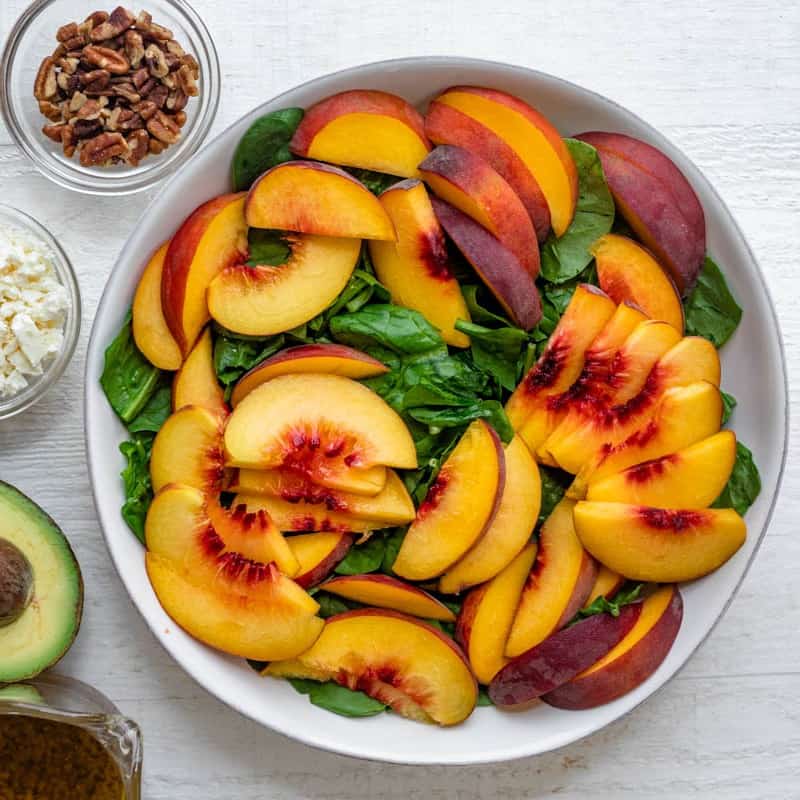
Enjoyed raw as a juicy snack or in fruit salads
Baking
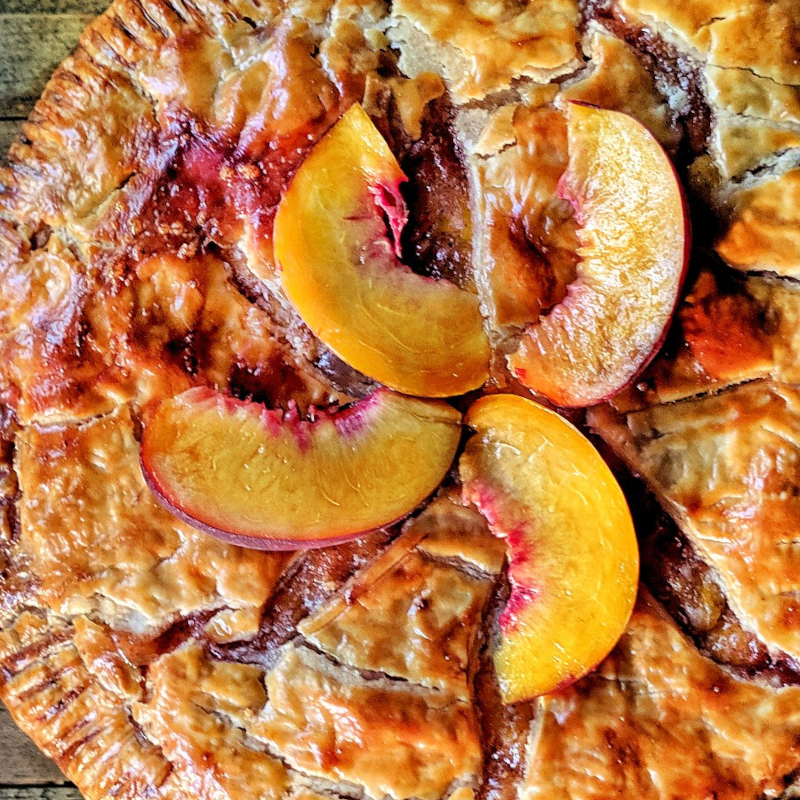
Used in pies, cobblers, crisps, muffins, and cakes
Preservation
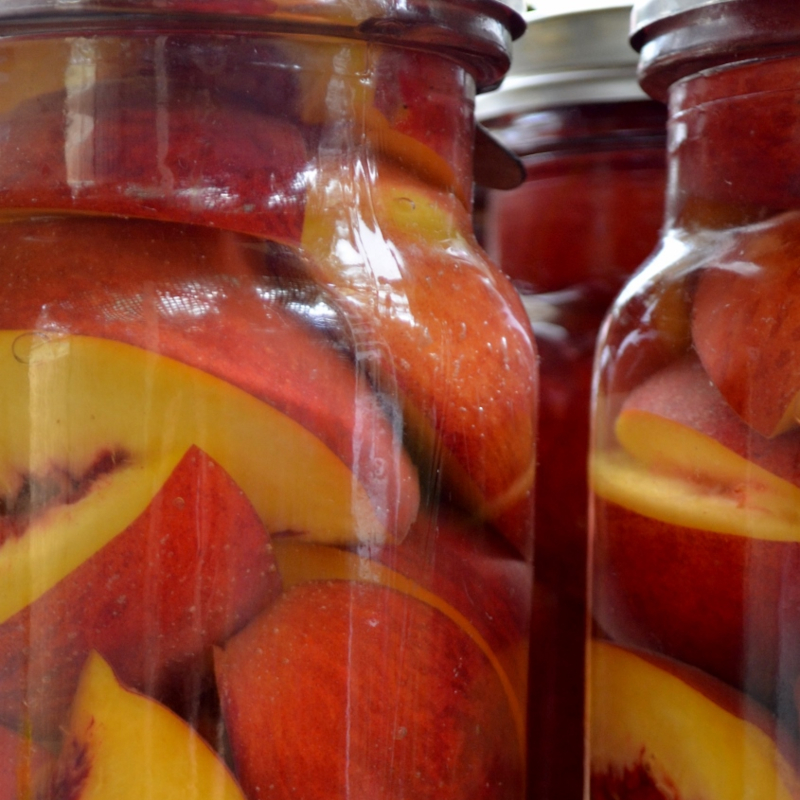
Made into jams, jellies, syrups, and fruit preserves
Dessert
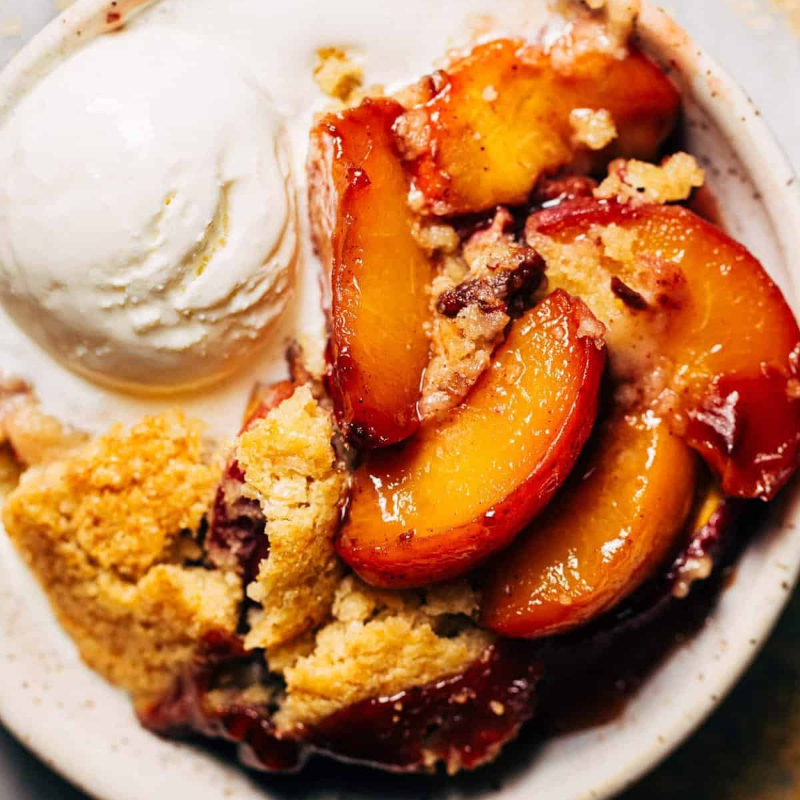
Peach ice cream, sorbet, parfaits, and fruit tarts
Cosmetics
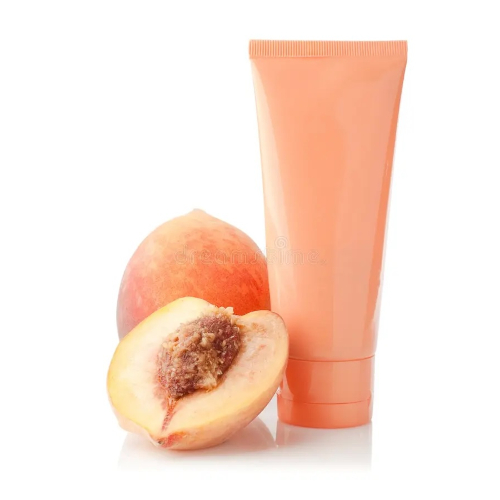
Used in face masks, scrubs, and creams for skin-softening properties
Uses Of
Tree Trunk
Firewood
Peach wood burns hot and clean, making it good for firewood.
It produces a pleasant, sweet-smelling smoke.
Not ideal for long-term seasoning or structural wood, as it decays faster than hardwoods like oak.
Smoking & Grilling
Peach wood chips or chunks are prized for smoking meats and BBQ.
Delivers a mild, fruity flavor — excellent for pork, poultry, and fish.
Crafts & Woodworking
Peach wood can be used for:
Turning small objects like bowls, pens, or decorative items.
Carving small sculptures or spoons.
It has a fine grain and light color, but it’s not very durable for furniture.
Natural Fungi Cultivation
Like other fruit woods, peach logs may be used to grow edible mushrooms, though it’s less common than using oak or beech.


